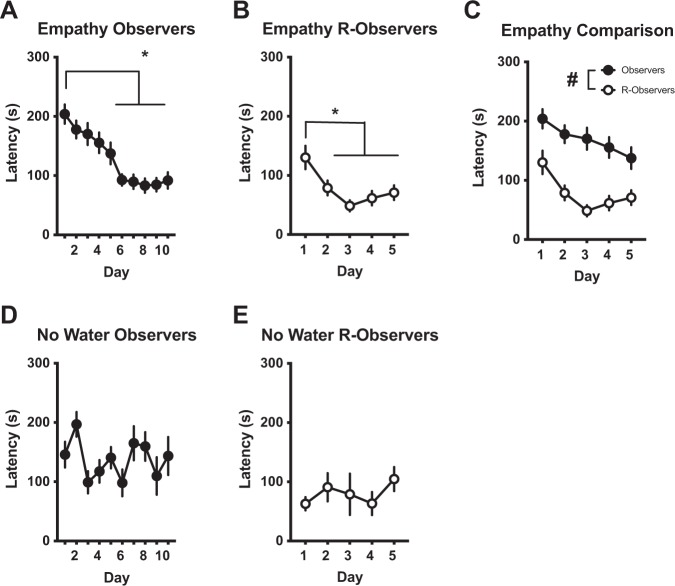Fig. 3.
a–c Rats engage in empathic behavior in the absence of social interaction. Performance of 24 (acquisition: 8 pairs/cohort over 3 cohorts) or 16 (reversal: 8 pairs/cohort over 2 cohorts) of male rats during our novel empathy task. a Latency for observer rats to chain pull to release a distressed partner decreased over 10 days. Significantly shorter latencies occurred on days 4–10. b R-observer rats that previously experienced the water showed a decrease in response latency by day 2. Specifically, significantly shorter latencies occurred on days 2–5. c When the first 5 days of acquisition and reversal were compared to each other, significantly shorter latencies were found across all 5 days in the reversal compared to the acquisition phase. d, e Rats do not respond in the absence of distress or social reward. Performance of male rats (n = 8 pairs) during the novel empathy task, when the target was placed in a dry compartment (i.e. no distress present). d No clear response pattern emerged when observer rats opened the guillotine door for target rats placed in a dry compartment rather than in water. e R-observer rats also showed no difference across days. *Significant difference from day 1 (p < 0.05). #Significant difference from R-Observers (p < 0.05).

